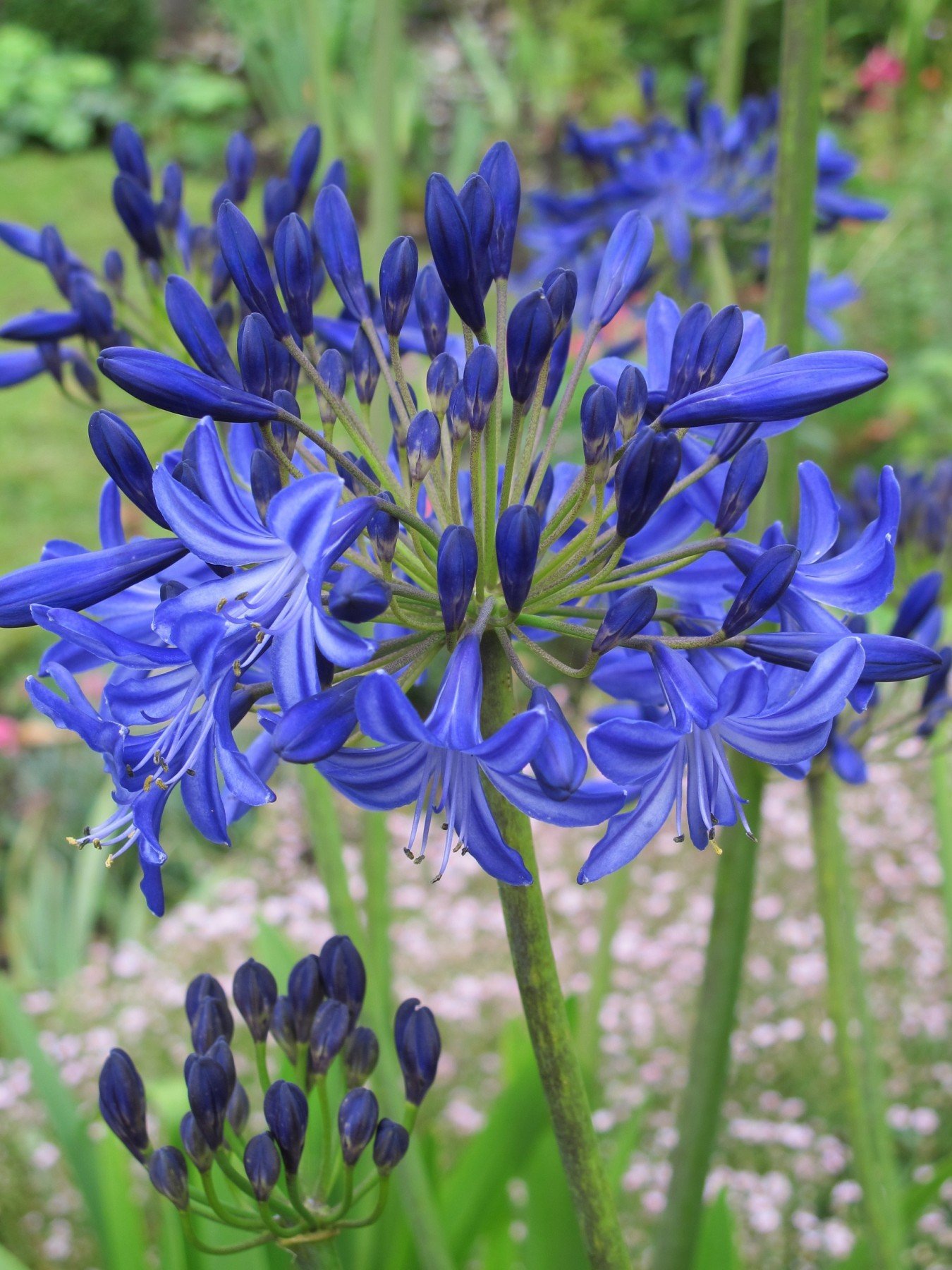Seasonal Agapanthus Care: Preparing for Winter and Summer
Seasonal Agapanthus Care: Preparing for Winter and Summer
Blog Article
Releasing the Secret to Successful Agapanthus Growing: Advice for a Flourishing Yard
In the realm of horticulture, cultivating agapanthus successfully calls for a calculated method that encompasses various elements of plant treatment. By comprehending the subtleties of agapanthus growing, one can develop an atmosphere where these plants grow and bloom generously.
Planting Agapanthus: Ideal Practices
When growing Agapanthus, proper soil prep work is vital for making certain effective growth and growth of these stunning blossoms. Agapanthus, commonly understood as Lily of the Nile or African lily, thrives in well-draining soil with a slightly acidic to neutral pH degree - Agapanthus. Before planting, it is critical to amend heavy clay dirts with raw material such as compost or peat moss to enhance water drainage and provide necessary nutrients for the plants
To grow Agapanthus, choose a location that gets complete sunshine to partial color, as this will promote healthy and balanced development and abundant flowering. Dig a hole two times the size of the plant's origin ball and position the Agapanthus at the exact same deepness it was previously expanding. Delicately backfill the hole with dirt, weighing down firmly to eliminate any air pockets around the roots.
Water the recently grown Agapanthus completely and continue to maintain the dirt uniformly wet, especially during the plant's active expanding period. Agapanthus. Using a balanced plant food once a month can even more sustain the plant's development and blooming. By following these finest techniques for growing Agapanthus, you can create a spectacular display screen of these fascinating blossoms in your yard
Perfect Soil Issues for Agapanthus
For optimum growth and flowering success of Agapanthus plants, making certain the soil conditions are optimal is critical. Agapanthus grows in well-draining dirt with a slightly acidic to neutral pH degree varying from 6.0 to 7.0. This type of soil permits sufficient water drain, stopping waterlogging which can bring about root rot. To boost dirt water drainage, take into consideration including natural issue such as compost or peat moss when preparing the planting site. Moreover, Agapanthus prefers soil that is rich in nutrients, so integrating a well balanced fertilizer throughout the expanding period can advertise healthy development and vivid flowers.
:max_bytes(150000):strip_icc()/agapanthus-growing-guide-7368912_hero-a3585e4f9ffe4b99a73c7ad8eb4ebe48.jpg)
Watering and Fertilizing Tips
To guarantee healthy growth and dynamic flowers, proper watering and fertilizing strategies are crucial for effective Agapanthus growing. Agapanthus plants profit from routine watering, particularly during the expanding period.
When it concerns fertilizing Agapanthus, a well balanced fertilizer with equal parts nitrogen, phosphorus, and potassium can be used in the springtime to advertise healthy growth and flowering. Slow-release plant foods are excellent for giving nutrients gradually over an extensive period. Avoid over-fertilizing, as this can bring about extreme foliage development at the cost of flowers.
Additionally, including raw material like garden compost into the dirt can enhance nutrient degrees and improve dirt framework, aiding in the total health and wellness of the Agapanthus plants. By following these watering and feeding suggestions, garden enthusiasts can guarantee their Agapanthus plants prosper and produce sensational displays of blossoms.
Pruning and Deadheading Techniques
Appropriate trimming and deadheading methods play an important role in preserving the health and aesthetics of Agapanthus plants, matching the important techniques of watering and fertilizing for effective cultivation. Pruning Agapanthus entails pop over to these guys removing spent blossom heads, dead or yellowing leaves, and total shaping of the plant to promote much better development. Deadheading, the procedure of removing faded blossoms, not only improves the plant's look but likewise motivates more blooming.
When deadheading Agapanthus, it is advisable to clip off the flower stem at the base utilizing sharp, tidy shears. This procedure redirects the plant's energy from seed production back right into origin and vegetation growth, advertising a healthier and extra robust plant. Routine deadheading can prolong the growing duration of Agapanthus and prevent self-seeding, which can cause congestion.
In regards to trimming, Agapanthus usually benefits from a light trim after flowering to clean up the plant and encourage fresh growth. Reducing the invested flower stems and getting rid of any kind of dead or broken vegetation aids keep the plant's vitality and total look. Nevertheless, it is necessary to prevent reducing into the crown of the plant, as this can compromise its health and wellness.

Protecting Agapanthus From Vermins and Diseases
Carrying out effective bug and disease administration strategies is vital to protecting the wellness and vitality of Agapanthus plants in growing. One common insect that influences Agapanthus is the Agapanthus borer, a caterpillar that tunnels into the plant, creating damage to the blossoms and fallen leaves.
In addition to pests, Agapanthus are susceptible to diseases such as root rot and fungal leaf places. By remaining cautious and resolving parasite and condition problems immediately, gardeners can assist their Agapanthus grow and prosper.

Conclusion
In verdict, successful farming of agapanthus requires appropriate growing methods, excellent soil problems, adequate watering and fertilizing, normal pruning and deadheading, and defense from pests and illness. By complying with these tips and techniques, garden enthusiasts can make certain a flourishing garden loaded with stunning agapanthus blossoms. Agapanthus. Remember to preserve regular care and interest to information to promote the health and wellness and long life of these stunning plants
When planting Agapanthus, correct dirt preparation is vital for making certain successful growth and development of these stunning blossoms.Water the freshly planted Agapanthus completely and continue to keep the soil evenly damp, particularly throughout the plant's active growing season.For ideal development and growing success of Agapanthus plants, ensuring the soil conditions are optimal is vital. When growing or Our site hair transplanting Agapanthus, guarantee the soil is well-prepared to offer the needed structure for the plants to develop themselves efficiently. One usual parasite that affects Agapanthus is the Agapanthus borer, a caterpillar that tunnels into the plant, triggering damage to the leaves and flowers.
Report this page